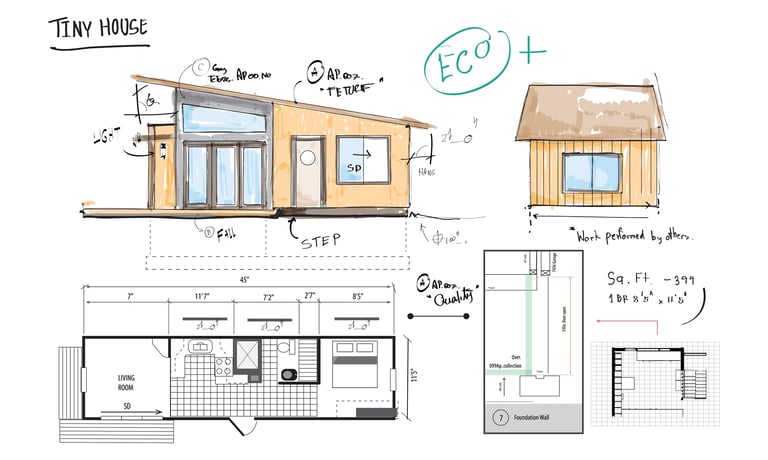Sustainable Design for a Better Future


Introduction:
Sustainable design is an approach to designing products, buildings, and environments that meet the needs of the present without compromising the ability of future generations to meet their own needs. The goal of sustainable design is to create a better future by reducing the negative impact of our actions on the environment, society, and economy. In this article, we will explore sustainable design and its importance for creating a better future.
Section 1: What is sustainable design?
Sustainable design is an approach to design that takes into account the environmental, social, and economic impacts of a product, building, or environment. It involves considering the entire lifecycle of a product or building, from raw materials and production to use and disposal.
Sustainable design aims to reduce the negative impact of our actions on the environment, society, and economy by creating products, buildings, and environments that are environmentally responsible, socially equitable, and economically viable.
Section 2: The importance of sustainable design
Sustainable design is important for several reasons:
Environmental impact: Sustainable design reduces the negative impact of our actions on the environment by reducing resource consumption, minimizing waste, and using renewable resources.
Social equity: Sustainable design promotes social equity by creating products, buildings, and environments that are accessible to all, regardless of their income or ability.
Economic viability: Sustainable design creates products, buildings, and environments that are economically viable, by reducing operating costs and increasing efficiency.
Future generations: Sustainable design ensures that future generations will be able to meet their own needs by preserving natural resources and reducing the negative impact of our actions on the environment.
Section 3: Examples of sustainable design
There are many examples of sustainable design in practice, including:
Sustainable products: Sustainable products are designed to reduce resource consumption and minimize waste. Examples include reusable water bottles, energy-efficient appliances, and biodegradable packaging.
Green buildings: Green buildings are designed to minimize energy consumption, reduce waste, and use renewable resources. Examples include LEED-certified buildings and net-zero energy buildings.
Sustainable transportation: Sustainable transportation includes modes of transportation that reduce the negative impact on the environment, such as electric cars, public transportation, and biking.
Sustainable urban planning: Sustainable urban planning involves creating cities and communities that are environmentally responsible, socially equitable, and economically viable. Examples include green spaces, public transportation, and renewable energy sources.
Section 4: The future of sustainable design
The future of sustainable design is bright, with many opportunities for innovation and progress. Here are some of the trends that are shaping the future of sustainable design:
Circular economy: The circular economy is an economic model that aims to minimize waste and maximize resource use. In a circular economy, products and materials are reused and recycled, reducing the need for new resources and minimizing waste.
Biophilic design: Biophilic design involves incorporating natural elements, such as plants and water, into buildings and environments. Biophilic design has been shown to improve mental health and productivity, as well as reducing the negative impact of buildings on the environment.
Smart technology: Smart technology, such as sensors and automation, can help to reduce resource consumption and increase efficiency in buildings and products.
Sustainable materials: Sustainable materials, such as bamboo and recycled plastic, are becoming more widely available and are being used in a range of products and buildings.
Conclusion:
Sustainable design is an important approach to creating a better future. By considering the environmental, social, and economic impacts of our actions, we can create products, buildings, and environments that are environmentally responsible, socially equitable, and economically viable. With the growing concern over climate change and the need to reduce our carbon footprint, sustainable design is becoming increasingly important. By embracing sustainable design, we can create a better future
